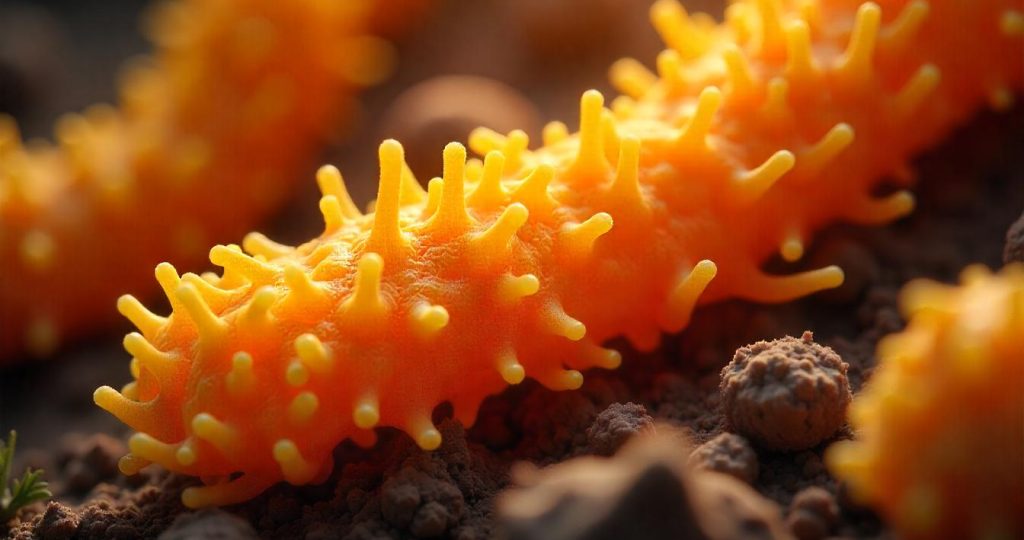Written By: Pragati Ekamalli, B.Pharm
Reviewed By: Vikas Londhe M.Pharm (Pharmacology)

Introduction
The increase of pathogens that resist multiple drugs is a big danger to global health, making many common antibiotics useless. In an important finding, scientists from Helmholtz Institute for Pharmaceutical Research Saarland (HIPS) have discovered the dual mechanism of action of previously known natural antibiotic called chlorotonils that work against resistant bacteria. This study, published in Cell Chemical Biology, offers new ways to fight infections that do not respond to other antibiotics
Discovery of Chlorotonils
In 2008, a group of researchers from HIPS found something interesting while looking for new antibiotics in soil bacteria. They discovered chlorotonils, the substances taken from a type of soil bacteria called Sorangium cellulosum. Chlorotonils are known for fighting bacteria, especially tough ones like Methicillin-resistant Staphylococcus aureus (MRSA), Vancomycin-Resistant Enterococci (VRE) and the malaria-causing parasite Plasmodium falciparum. They have a special ring shape and contain several chlorine atoms that help them work against bacteria.
However, chlorotonils are hard to dissolve and not very stable, which makes it difficult to turn them into medicines that’s why scientists later synthesized derivatives called dehalogenil to improve its properties, but so far, they have not been used in treatments.
Dual-Action Mechanism: How Chlorotonils Work
Researchers led by Dr. Jennifer Herrmann and Prof. Rolf Müller have found out how chlorotonils work. Unlike most antibiotics, chlorotonils attack bacteria in two ways. First, they attach to the bacteria’s cell wall and cause lipid-targeted membrane depolarization making it weak by causing uncontrolled efflux of potassium ions out of cell. On the other hand chlorotonil functionally inhibit two enzymes a membrane bound phosphatase YbjG and the cytoplasmic methionine amino peptidase MetAP which help the bacteria build their cell wall and proteins.
Dr. Felix Deschner, the main author of the study, explains that when chlorotonils attach to the cell membrane, potassium ions leak out of the cell. This messes up the cell’s internal balance, affecting its functions and pressure. These effects can kill bacterial cells.
By blocking the enzymes phosphatise YbjG and methionine amino peptidase MetAP at the same time; chlorotonils seriously harm the cell’s abilities to produce certain proteins required for cell to live and function, leading to its death.
This two-part approach also explains why chlorotonils work quickly. They quickly disrupt the cell membrane, making it hard for bacteria to resist. Unlike some traditional antibiotics that target specific enzymes where bacteria can adapt by making more enzymes or structurally changing the enzyme, chlorotonils’ varied attack makes it tougher for bacteria to develop resistance.
Overcoming Multidrug Resistance
The new antibiotic Chlorotonil is better than traditional antibiotics because it works in two ways, making it a strong option against antibiotic resistance bacteria.
Regular antibiotics usually focus on single bacterial function like cell wall synthesis. Bacteria can evolve our self through these challenges by doing single mutation in the target pathway.
Chlorotonil, on the other hand, attacks bacteria in two different ways. This means bacteria need to change in two places at the same time to become resistant, which is much less likely to happen. This makes it harder for bacteria to fight back.
However the dual action of Chlorotonil helps each other, making it effective even without combining it with other antibiotics. This makes treatment simpler than using several antibiotics at once.
Implications and Future Research
Researchers at the Helmholtz Centre for Infection Research (HZI) and the Hans Knoll Institute (HKI) are actively advancing the development of chlorotonil-based compounds, particularly focusing on a derivative named dehalogenil. This compound has demonstrated potent activity against both sexual and asexual stages of the malaria parasite Plasmodium falciparum, with no observed resistance under laboratory conditions.
In addition to malaria, chlorotonil derivatives are being investigated for their efficacy against persistent intestinal pathogens like Clostridioides difficile. Studies have shown that chlorotonil A (ChA) can effectively combat dormant stages of C. difficile, which are often resistant to conventional antibiotics, and does so with minimal disruption to the gut microbiome.
The future prospects for researchers at HZI and HKI include advancing dehalogenil through preclinical development, exploring its potential against other resistant pathogens, and collaborating with clinical partners to assess its efficacy in human trials. These efforts are supported by funding from initiatives like GO-Bio initial and the German Center for Infection Research (DZIF), which aim to translate promising compounds into viable therapeutic options.
Conclusion
As antibiotic resistance escalates, innovative solutions like chlorotonils offer hope. Their dual-action mechanism presents a robust strategy against MDR pathogens, reinforcing the importance of natural products in drug discovery. With further research, chlorotonils could become a critical weapon in the fight against superbugs.
References
1. Deschner, Felix et al., Natural products chlorotonils exert a complex antibacterial mechanism and address multiple targets, Cell Chemical Biology, Volume 0, Issue 0, available from https://www.cell.com/action/showPdf?pii=S2451-9456%2825%2900095-9
2. Chlorotonils: Naturals antibiotics’ dual-action mechanism against multidrug-resistant pathogens uncovered, Phys Org, 15 April 2025, available from https://phys.org/news/2025-04-chlorotonils-naturals-antibiotics-dual-action.html
3. W. Hofer, F. Deschner, G. Jézéquel, L. Functionalization of Chlorotonils: Dehalogenil as promising lead compound in vivo application, Angew. Chem. Int. Ed. 2024, 63, e202319765. https://doi.org/10.1002/anie.202319765
4. Chlorotonil: Game-Changer in the Fight against Multidrug-Resistant Pathogens, Helmholtz Centre for Infection Research, 15 April 2025, available from https://www.helmholtz-hzi.de/en/media-center/newsroom/news-detail/chlorotonil-game-changer-in-the-fight-against-multidrug-resistant-pathogens/

